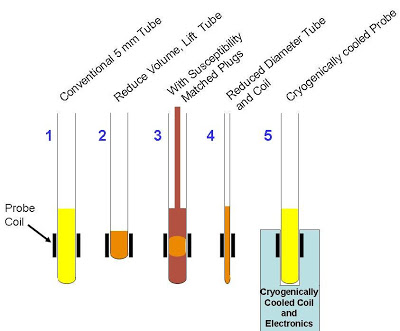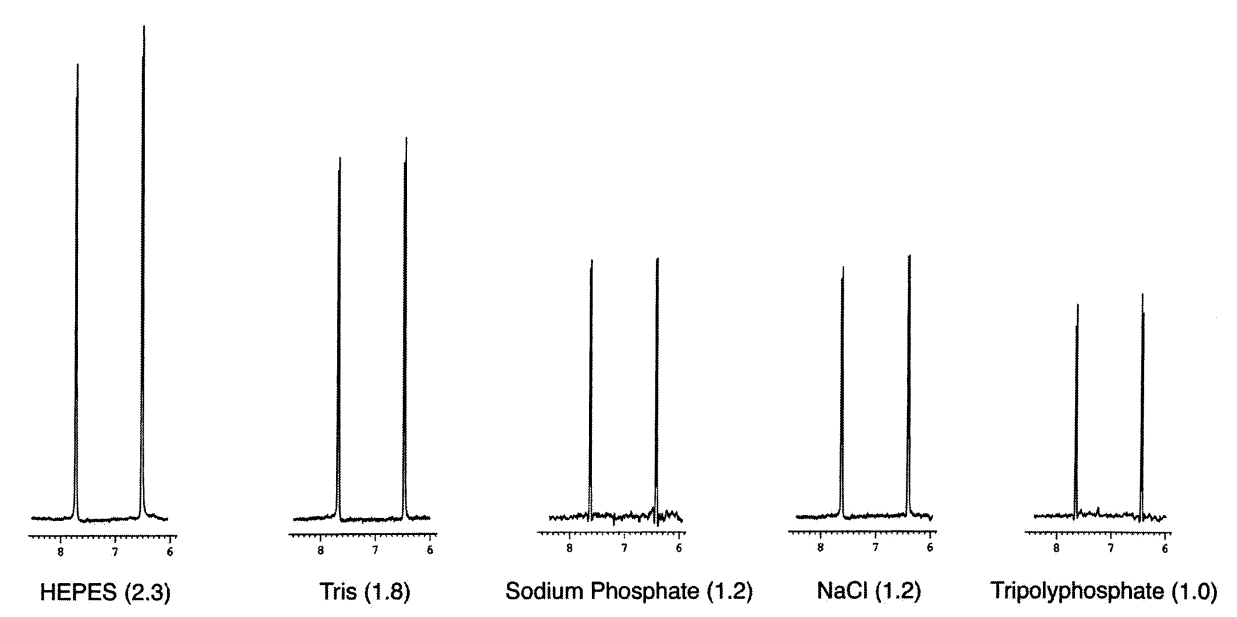...
If you use a regular 5 mm NMR tube, a filling length of 40 mm is recommended, which corresponds to about 550 µl of sample in a 5 mm tube with walls 0.4 mm thick. If the volume is limited, 5 mm Shigemi (ie containing susceptibility-matched plugs), or 3 mm tubes (with slightly reduced sensitivity), can be used and will require less volume. Below is an illustration of the construction of a Shigemi tube:
Source: JEOL
Summary of optimal volume and quantity for different NMR tubes:
...
Practically, on the instruments of the Structural Biology Platform, at least 100 µM of sample is sufficient for simple checks (1D and 2D correlation experiments), whereas concentrations beyond 0.5 mM should be attained in order to have good SNR on multidimensional experiments within acceptable experiment time. When the quantity and volume are limited, some options are available to obtain a good signal-to-noise ratio (SNR):
Source: UOttawa NMR facility blog
...
In the figure below, we can see that signal-to-noise ratio (value in parentheses) varies by 2-fold depending on the type of chemicals used to prepare the NMR buffer.
Sensitivities relative to tripolyphosphate of a 2 mM p-aminobenzoic acid sample dissolved in 200 mM buffer. Source: Kelly et al (2002)
Illustrated below is a similar effect on a biological sample (lysozyme in this case).
Source: Kelly et al (2002)
...
The sample has to be optically clear and free of particles in suspension. A 5-minute centrifugation, or a filtration through a 0.22 µm filter, will remove any suspended matter.
...







